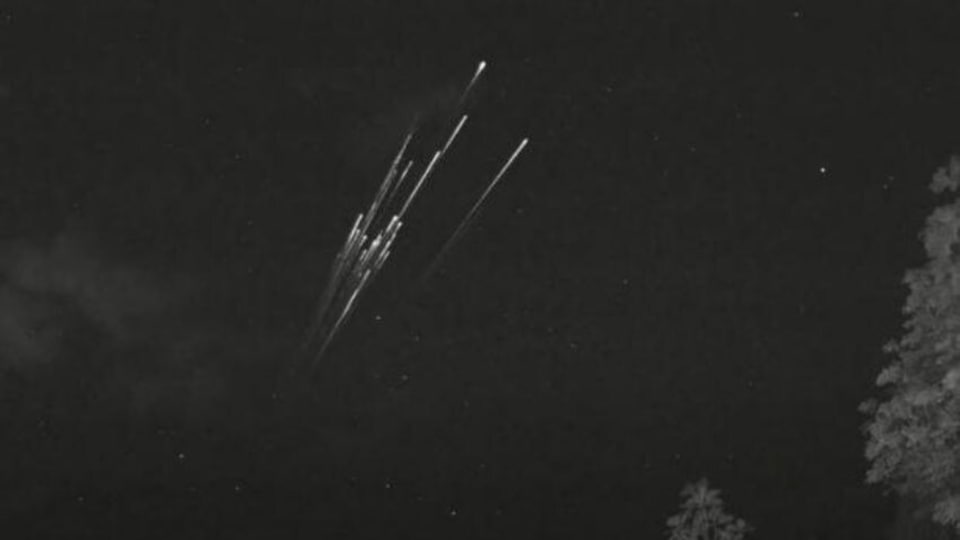WATCH! Elon Musk led Starlink satellites burn up in the sky after solar storm strike- video
You can actually watch a video of solar storm impact on Elon Musk led Starlink satellites burning up in the sky. They were hit by the geomagnetic storm from our Sun.

Space is awesome to behold, but it is also full of nasty surprises. That is exactly what Elon Musk got- a nasty surprise from a solar storm that knocked out a huge number of his newly launched Starlink satellites and caused them to burn in the sky. A video has surfaced online showing SpaceX satellites burning up in Earth's atmosphere. The satellites were hit by a geomagnetic storm which knocked them out of orbit, after which they started to burn in Earth's atmosphere. Because of this, Elon Musk's space venture SpaceX lost dozens of satellites to a storm. As per a report by The Sun, "The dramatic video shows space debris streaking across the night sky like comets over Puerto Rico."
A Falcon 9 rocket was launched on February 3 with 49 new Starlink satellites, designated as group G4-7. And soon after the launch, a geomagnetic storm struck Earth's atmosphere, stopping 40 of the satellites from reaching their final orbit. Since they could not do that, they fell back towards Earth and were destroyed by the re-entry. The video of at least one Starlink satellite breaking apart on re-entry was captured by cameras operated by Sociedad de Astronomia del Caribe, a Puerto Rican non-profit organisation. The clipping was recorded on February 7 and is as long as three minutes.
"One clue is that the orbital plane of this launch was over Puerto Rico near the time of the event, and the direction of movement (SW-NE) matches it," Langbroek wrote Wednesday, as quoted by The Sun.
"To get even more certainty, I did some astrometry on the footage and fitted a rough circular orbit to the measured positions. The rough orbital fit I get – I measured three fragments – yield[s] orbital inclinations in the range of 54-56 degrees: Starlink satellites are in 53.2-degree inclined orbits. This is close enough (given the error margin) to conclude that the reentering object fits with the Starlink orbital plane," he added.
As many as 40 of the 49 Starlink were hit by a geomagnetic storm. The affected satellites re-entered the Earth's atmosphere, or are on track to do so, burning up in the process, the company said. That means no orbital debris is created and no parts fall to the ground, SpaceX said.
SpaceX said the solar storm increased the temperature and density of the atmosphere, and was so severe that the drag on the satellites was 50 percent higher than in previous launches. The company added that efforts to save the satellites by flying them “edge-on" like a sheet of paper -- to avoid the worst of the storm -- failed.
It can be noted that a geomagnetic storm is a major disturbance of Earth's magnetosphere that occurs when there is a very efficient exchange of energy from the solar wind into the space environment surrounding Earth, according to Space Weather Prediction Center, NASA. The geomagnetic storm is triggered by an ejection of CME (coronal mass ejection) from the Sun that is creates a disturbance in Earth atmosphere when it hits.
These solar storms result from variations in the solar wind that produce major changes in the currents, plasmas, and fields in Earth's magnetosphere. They can disrupt satellites and in extreme cases mess with GPS systems and even shut down power grids.
Catch all the Latest Tech News, Mobile News, Laptop News, Gaming news, Wearables News , How To News, also keep up with us on Whatsapp channel,Twitter, Facebook, Google News, and Instagram. For our latest videos, subscribe to our YouTube channel.


























